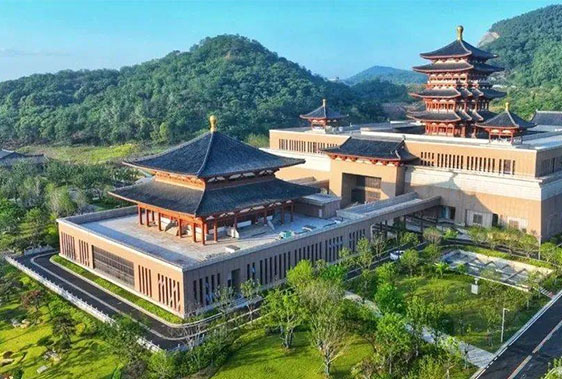Terminus Group AIoT technology improves Xiangyang Museum digital upgrade and enables cultural scenarios smart and sustainable development
Terminus Group, the global smart services and AIoT solutions provider, supports the digital upgrade and management of Xiangyang Museum in Hubei Province, improving a more refined and greener display and restoration environment, promoting the management efficiency of collections, and enabling the sustainable and smart development via technology to artistic and cultural scenarios.

Hubei Xiangyang Museum
The Xiangyang Museum consists of three Tang-style buildings and offers an 8,400-square-meter exhibition space. It opened in February 2024 and is a comprehensive museum that integrates functions such as cultural relics exhibition, archaeology, and restoration. As the Xiangyang Museum has high requirements for environmental temperature, humidity, and systematic management of archives, Terminus Group provides a cloud and edge collaborative solution to improve the Museum’s sustainable and smart operation and management. Terminus’ AIoT-based solutions can detect real-time temperature, humidity, and air quality of the environment, help achieve dynamically adjustment of water heating, supply and exhaust air, and provide more efficient and finer collections management system for the Museum.
To be specifically, when the end sensors and controllers deployed in each exhibition area detect inappropriate environmental changes, it will immediately upload the digital information to the edge nodes, and the smart system deployed on the edge side can conduct timely processing and localized response through edge computing. At the same time, based on the LLMs behind it, the system will further analyze and learn the patterns of temperature and humidity changes, making it more efficient and timely predicting and responding to future environmental changes. Combined with digital twinning technology, the smart system can also visually display the real-time situation of each exhibition area, allowing for a panoramic view of tens of thousands of collections. This cloud-edge-end collaborative structure can also achieve real-time capture, collection, transmission, storage, and analysis of energy’s digital information, greatly improving energy management efficiency and refinement. Based on this solution, the Museum can dynamically manage and adjust light, electricity, and air conditioning according to the flow of on-site tourists, reducing energy-consuming and promoting green and sustainable operation.
The Xiangyang Museum has over 35,000 collections, covering hundreds of thousands of years history from prehistoric times, pre Qin, Qin and Han dynasties, two Jin dynasties, Sui and Tang dynasties, to the Ming and Qing dynasties. The cultural relics in the collection include gold and silver artifacts, bronze artifacts, ceramics, jade and stone artifacts, painted wood artifacts, ancient calligraphy and painting, inscriptions and tombstones, stone carvings, and wood carvings, etc. Among them, the cultural relics from the pre Qin period, especially a large number of bronze artifacts with inscriptions, forming the characteristics of the cultural relics and history in the Xiangyang collection.
Terminus Group is committed to improving the management efficiency and smart and sustainable operation of urban spaces and accelerating the digital transformation and upgrading of various vertical scenarios by its AIoT-based technologies and solutions. Based on its five-tier technical platforms, Terminus’ solutions have been implemented in over 100 cities worldwide, with a total of over 9000 projects. In the future, Terminus Group will further strengthen its cloud and edge solutions and LLMs capabilities, explore the application of AIoT technology in cultural and tourism scenarios, and revitalize ancient civilization with cutting-edge technology.
